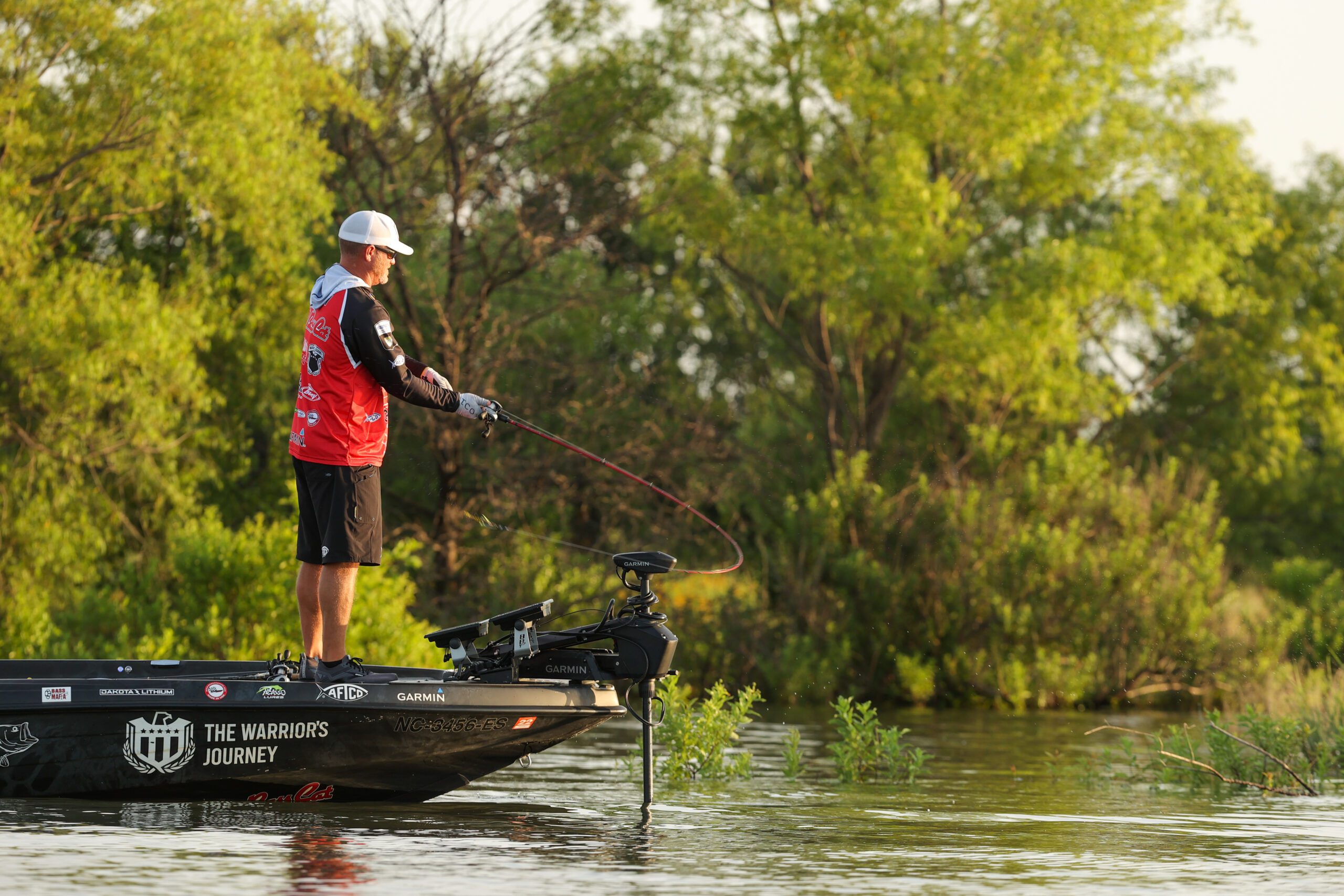Only eight of 495 fish died after two-hour trip
Story by Craig Nyhus, Lone Star Outdoor News
This story originally appeared in the June 25 issue of LSON.
When the super bowl of bass fishing moved from March until June, the questions started pouring in. The event, at Lake Ray Roberts in northern Denton County, held its weigh-ins at Dickies Arena in Fort Worth, a drive of more than an hour each way.
Fishing forums were loaded with comments wondering how officials would keep the bass alive for the drive to and from Fort Worth in the Texas heat.
Todd Driscoll, a district supervisor and biologist with Texas Parks and Wildlife Department, was in charge of the procedures to protect the bass and to reduce the number of bass being transported by more than half.
“It went exceptionally well,” Driscoll, also a tournament angler, said. “Mother Nature helped us some — it didn’t get really hot until the week of the event. Water temps were only 80 degrees, and concerns go up the warmer the water is. There’s a big difference between 80 and 85 degrees.”
Driscoll and biologists worked with B.A.S.S. to put together the fish care plan.
“Ice was given to each angler each morning,” he said. “They used it appropriately.”
As soon as the boats came in and got onto the trailer, two biologists checked the pumps and livewell temperature, adding more ice if necessary.
“The optimal temperature is 5 to 8 degrees below the lake temperature,” Driscoll said. “The cooler water holds more oxygen.”
Once the boats arrived in Fort Worth, six more biologists were there, doing the same thing, and also adding pure oxygen to the livewell while the anglers were in the waiting line.
“The oxygen does wonders for the fish,” Driscoll said. “It gets the livewell oxygen level to 100 percent.”
The first two days of the event, each angler’s bag was weighed at the lake and up to two of their largest fish were returned to the livewell for transport to the arena. All remaining fish were immediately transferred to the live release boat and returned to the lake.
At the arena, after the bass were displayed to the fans, biologists loaded the fish into hatchery trailers and returned to the lake where release boats and personnel were waiting to place the fish back into Lake Ray Roberts.
“The fish got the best care possible,” Driscoll said. “There were only eight dead fish out of 495 bass brought to the weigh-ins by the anglers. Given all the fish went through, it went exceptionally well.”
On the final day, the 25 anglers who made the cut could bring a five-bass limit to the arena, with the fish care protocol remaining the same.
“When the fish got back to the lake, they were released at about 8 each evening,” Driscoll said. “They were transferred from our hatchery trailer to the B.A.S.S. release boat and taken out and scattered away from the boat ramp. I expected to have to make some judgment calls on some stressed fish but didn’t have to make a single one.”
Chemicals weren’t used to help the fish survive.
“We use some salt,” Driscoll said. “It’s a huge deal to reduce stress. When a bass gets stressed, it expels electrolytes. Most of the fish care products are made up of mostly salt.”
Overall, Driscoll said the result may have been better than an event where the fish are weighed and displayed near the boat ramp.
“How the anglers take care of the fish is a big part of it — they had the fish for the longest length of time,” he said. “If we get them in bad shape, there’s not much we can do for them. The anglers did great.”


